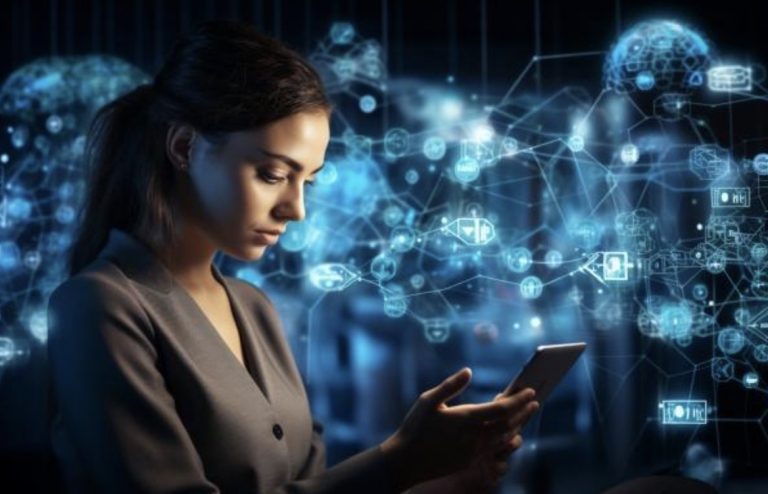The evolution of human-technology interfaces has been nothing short of remarkable. In just a few years, we’ve transitioned from traditional mouse and keyboard setups to the interfaces of touchscreens and voice controls. In addition, we’ve made strides into immersive technologies and cutting-edge artificial intelligence systems. This rapid development has ushered in many possibilities, improving workplace efficiency, simplifying everyday tasks, and revolutionizing entertainment experiences.
The Milestones So Far
Many have been surprised by the rapid evolution of legacy systems in the new millennium. With dizzying speed, these systems have undergone fundamental transformations, reshaping our interactions with devices, data, and even fellow humans. The revolution in technology began with the introduction of traditional mainframe computers. Despite their limited capabilities, they represented an incredible breakthrough by achieving more output with less input.
In the twenty-first century, input has been simplified to use gestures, motion, and senses such as touch and sound. Nowadays, people can use their biometric data to communicate with machines and achieve desired outcomes. For instance, standing in front of a door equipped with visual sensors can trigger it to open or close in response to their presence. Today’s digital technologies are intelligent enough to understand human movements and even respond to unspoken commands.
We are living in an extraordinary era where human nature and experiences form the basis of our interactions with machines and data. Recent advancements in artificial intelligence have made it much easier to communicate with machines, thanks to their improved capabilities in areas like deep learning and machine learning.
Smart Interfaces
The movement toward intelligent interactions is narrowing the distance between humans and computers and introducing new realities. Modern human-computer interfaces can quickly gather, process, and apply data, unlike prior technologies. The first item on our appreciation list is touchscreen technology. It’s impressive how touchscreens have transformed human-computer interaction.
Touch-enabled devices, from smartphones and tablets to larger screens, have become a staple in our lives. They enhance our daily experiences by providing easy access to digital information and interactive experiences. Nowadays, browsing the internet or inputting data is as simple as a single touch or gesture. With their ever-improving responsiveness, touchscreens offer seamless user experiences. They represent a new era of convenience in how we connect, live, learn, and entertain ourselves.
Voice Assistants and Chatbots
Voice assistants have revolutionized human-computer interactions by enabling more natural and intimate conversations. Siri, Alexa, Cortana, and Google Assistant are now sophisticated enough to engage with us in ways that mimic conversations with friends, coworkers, and family. These remarkable technologies can listen to our voices, interpret messages, and provide personalized responses. They have become an invaluable addition to our lives, simplifying tasks that would otherwise require manual effort. With voice commands, we can easily select music, open window shades, control lights in any given area, start the coffee machine from the bedroom, and much more.
Now, it is chatbots that are revolutionizing the way we interact with technology, with ChatGPT leading the way. ChatGPT stands out as a leader due to its advanced natural language processing capabilities, which enable it to generate remarkably human-like responses. People are now using ChatGPT for online gambling, writing songs, and even designing websites. The success of ChatGPT has inspired the development of other innovative chatbots, such as Google Bard, Bing Chat, ChatSonic, and Drift. Interacting with these chatbots is truly awe-inspiring, as they demonstrate a deep understanding of standard human language and provide responses that are remarkably accurate and human-like.
Integrating Interaction-Based Technologies
The interface between humans and computers has seen remarkable progress, enabling professionals across different fields to improve their productivity and efficiency. A prime example of this evolution is the integration of intelligent interfaces, which effectively combine auditory and visual computing abilities. This integration has proven particularly beneficial in the retail sector, enabling businesses to track customer mindsets and behaviors in real time, leading to more informed decision-making and improved service. Retailers have utilized this technology to improve their data-driven marketing strategies, customizing offerings and promotions based on customer insights.
Looking ahead, retailers could further enhance customer experiences by tapping into the intuitive nature of consumers, potentially enabling on-time deliveries based on anticipated needs rather than reactive orders. The convergence of technology and retail may also lead to exciting advancements in medicine-related interfaces. For instance, thermal imaging technology can be used to gather biodata, which in turn can be utilized to enhance consumer experiences and services.
Final Thoughts
The journey from mainframe computers to AI-driven chatbots like ChatGPT represents a significant leap in technological innovation, leading to more intuitive and personalized experiences. This evolution highlights the increasing potential for technology to become an integral part of our daily lives, transforming how we work, communicate, and interact with the world. As we continue to explore the possibilities, the convergence of human insight and machine intelligence promises to open new horizons, redefining our relationship with technology and each other.



0 Comments